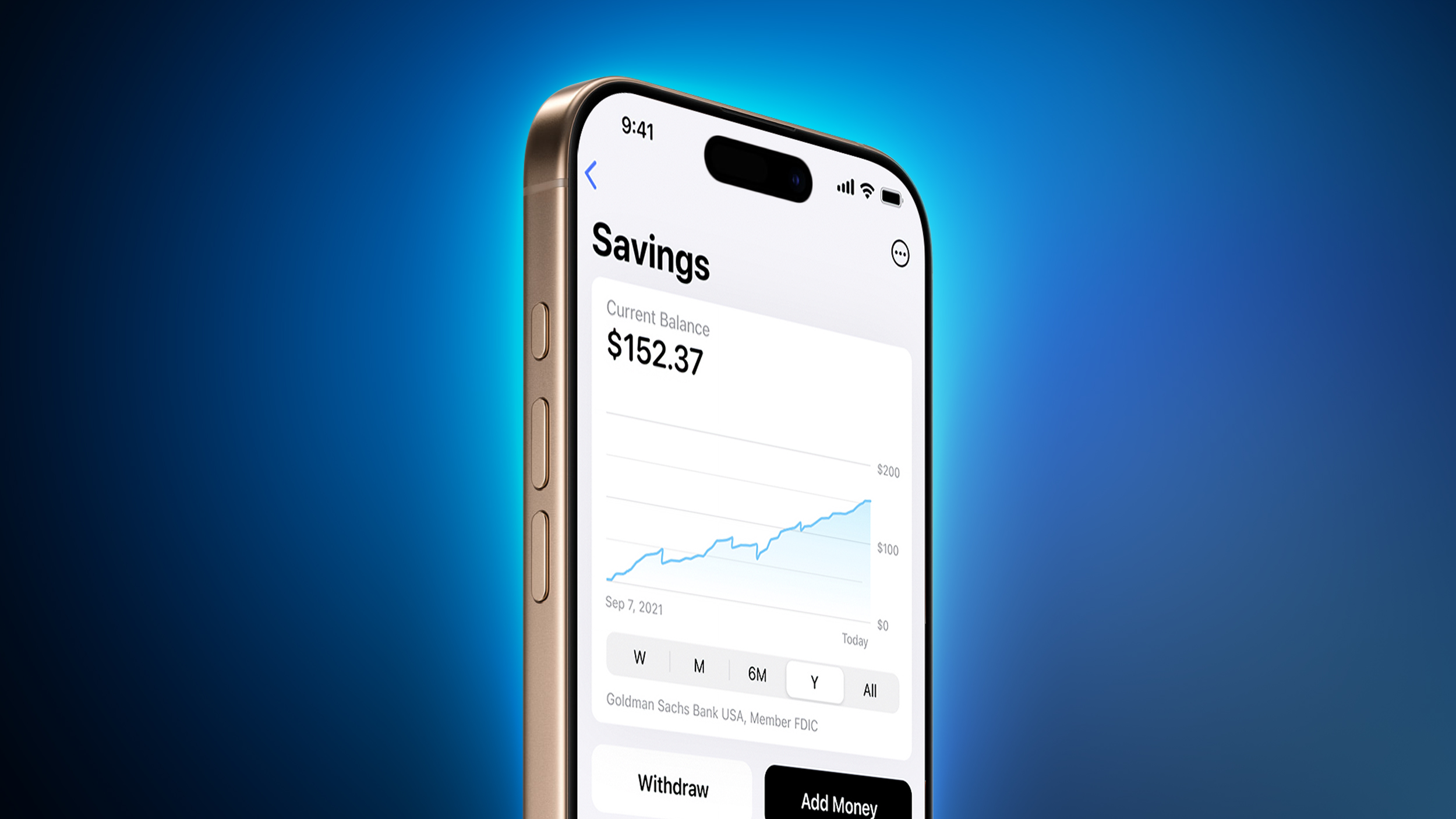
In the U.S., the Apple Card offers a high-yield savings account option, allowing you to earn far more interest on your money compared to the average bank's basic savings account. Following a rate cut this week, the account now has an APY of 3.9%. For example, if you deposited $1,000 into the account and maintained that balance for one year, you would earn $39 in interest over that period based on the current APY.

The chart below compares the Apple Card savings account's rate to some other popular high-yield savings accounts in the U.S., as of writing.
| Provider | APY* |
|---|---|
| Ally | 3.85% |
| Apple Card Savings | 3.9% |
| Marcus by Goldman Sachs | 3.9% |
| Discover | 3.9% |
| American Express | 3.9% |
| Capital One | 3.9% |
| Citizens Bank | 3.9% |
| SoFi | 4% |
| Barclays | 4.1% |
| Synchrony | 4.1% |
| PNC Bank | 4.15% |
| Betterment | 4.25% |
| Wealthfront | 4.25% |
| UFB Direct | 4.31% |
| Fierce | 4.5% |
| CIT Bank | 4.55% |
| Openbank by Santander | 5% |
| Pibank | 5% |
* Advertised APYs as of December 5, 2024, excluding promotional rates and affiliate bonuses. Minimum balance requirements and other conditions vary per account. APYs can change at any time, so we cannot guarantee the accuracy of the rates listed above.
Apple launched its savings account in April 2023, in partnership with Goldman Sachs. The account can be opened and managed in the Wallet app on the iPhone, and it has no fees, no minimum deposits, and no minimum balance requirements. You must have an Apple Card, be a U.S. resident, and be at least 18 years old to open an account.
The account allows Apple Card holders to earn interest on their Daily Cash cashback balance, and on funds deposited via a linked bank account or an Apple Cash balance. The maximum balance allowed is now $1 million, up from $250,000.
When the account launched, Apple and Goldman Sachs offered an APY of 4.15%, but the rate has fluctuated in line with U.S. Federal Reserve benchmark rate changes. The APY peaked at 4.5% in early 2024, and the current 3.9% is an all-time low.
To open a savings account in the Wallet app, tap on your Apple Card, tap on the circle with three dots at the top of the screen, tap Daily Cash, and select Set Up Savings.
Goldman Sachs reportedly plans to end its consumer lending partnership with Apple, but it is unclear if this will have any impact on Apple Card holders. JPMorgan, owner of Chase Bank, reportedly could take over as Apple's financial partner.
Article Link: Apple Card Savings Account's Lowered Rate Compared to Other Options
Last edited:

